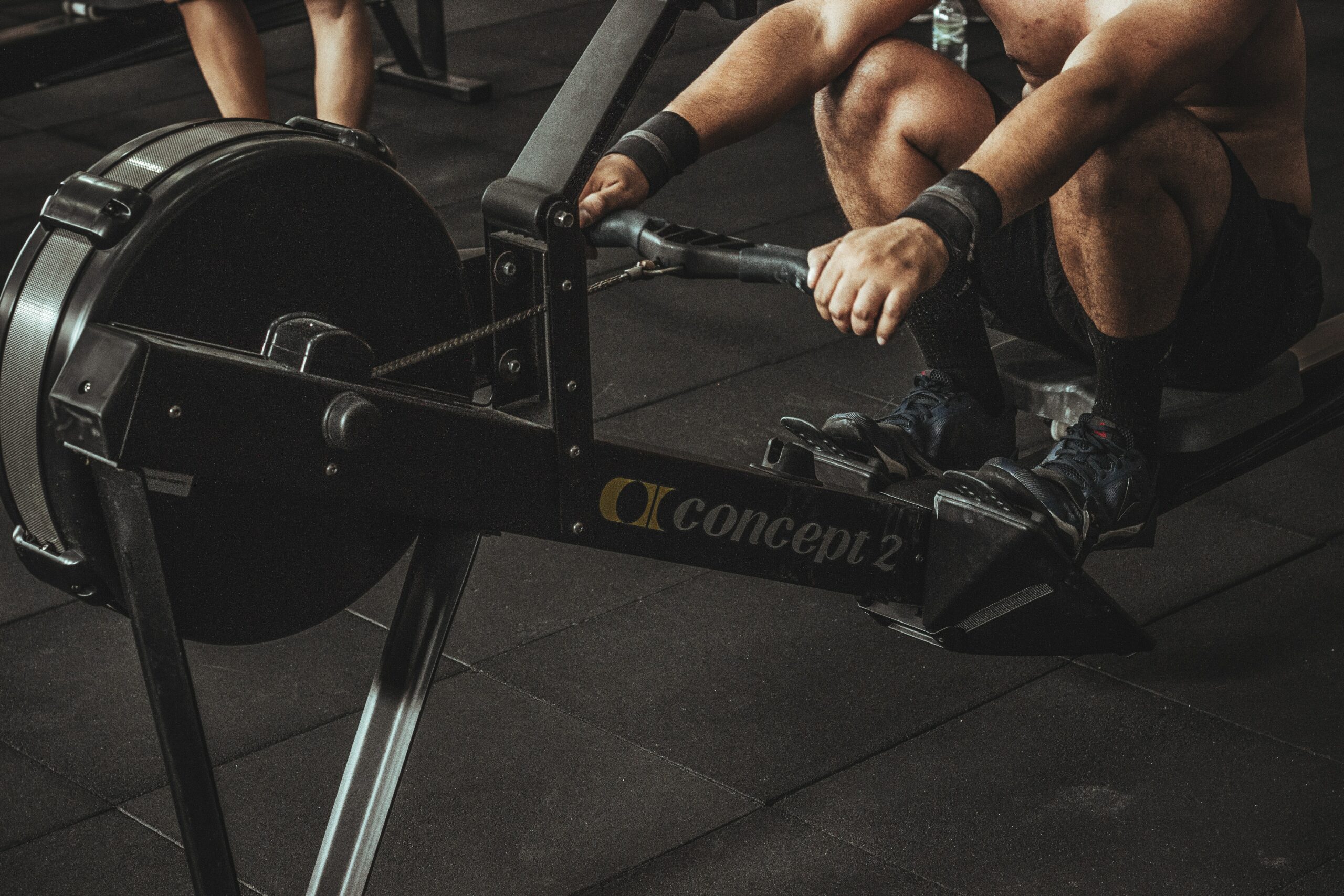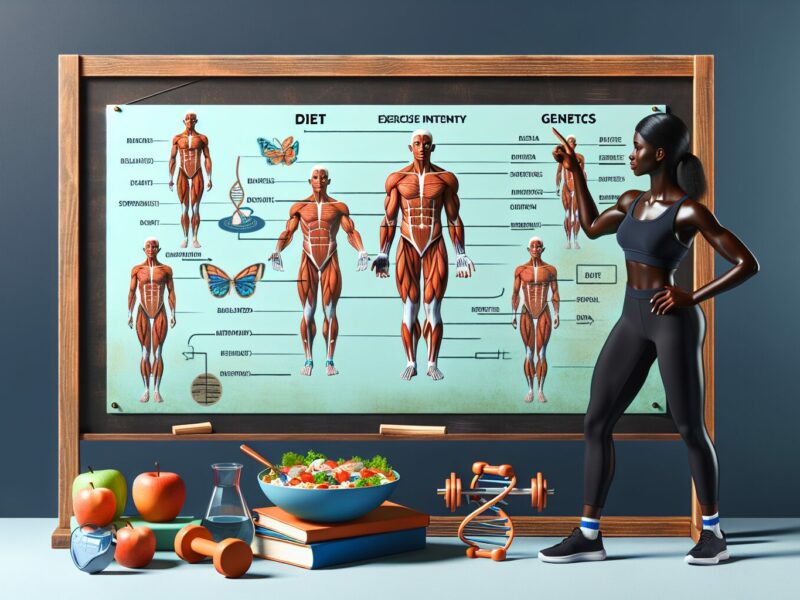So, you’ve been hitting the gym and dreaming of a toned, muscular physique? You’re probably wondering just how long it will take to achieve those chiseled abs and biceps that turn heads. Well, the journey to looking very muscular is different for everyone, as it depends on various factors such as your starting point, genetics, and commitment to your fitness routine. While there isn’t a one-size-fits-all answer, with consistent effort, dedication, and a well-designed workout plan, you’ll start to see noticeable results in as little as a few months, and gradually progress towards that coveted muscular look.
Factors Influencing the Timeline
Genetics
Genetics play a significant role in determining how long it takes for an individual to achieve a muscular physique. Some people naturally have a higher muscle mass and better muscle-building potential than others. While genetics may limit or accelerate muscle growth to some extent, it does not necessarily mean that achieving a muscular physique is impossible for everyone. Regardless of your genetic predisposition, it is important to remember that consistent effort and dedication can still lead to significant improvements in muscle mass and strength.
Body Type
Another factor that influences the timeline for achieving a muscular physique is body type. There are three primary body types: ectomorphs, mesomorphs, and endomorphs. Ectomorphs are typically lean and have a harder time building muscle mass. Mesomorphs are naturally muscular and have an easier time gaining muscle. Endomorphs tend to be more prone to storing fat and may have to focus on losing fat before attempting to build muscle. Understanding your body type can help you tailor your training and nutrition to optimize your progress.
Diet and Nutrition
Your diet and nutrition play a crucial role in muscle building. Consuming an adequate amount of calories, particularly from protein sources, is essential for muscle growth. Protein is the building block of muscles and provides the necessary amino acids for repair and growth. It is recommended to consume around 0.8-1 gram of protein per pound of body weight to support muscle growth. Additionally, ensuring a balanced diet containing a variety of nutrients is important for overall health and optimal muscle development.
Training Program
The type of training program you follow will greatly impact how quickly you can achieve a muscular physique. Resistance training is essential for building muscle, and incorporating a well-designed program that focuses on compound exercises and progressive overload is key. Compound exercises engage multiple muscle groups simultaneously, allowing for efficient muscle stimulation and growth. Progressive overload, which involves gradually increasing the weights or repetitions over time, is crucial to continually challenging your muscles and promoting muscle growth.
Consistency and Discipline
Consistency and discipline are vital factors in achieving a muscular physique. Building muscle requires a regular and consistent training routine, as well as dedication to following a proper nutrition plan. Skipping workouts or having an inconsistent training schedule can hinder your progress. Likewise, inconsistent nutrition or indulging in unhealthy habits can negatively impact muscle growth. By staying committed and disciplined, you can create a solid foundation for muscle development and see significant progress over time.
Age
Age can also influence the timeline for achieving a muscular physique. Generally, younger individuals tend to see faster results due to higher hormone levels and faster recovery rates. As we age, our hormone levels, such as testosterone, naturally decline, which can impact muscle growth. However, it is still possible to build muscle at any age with the right training and nutrition plan. Older individuals may have to focus more on recovery, joint health, and injury prevention.
Previous Experience
If you are new to strength training and have never engaged in regular exercise or weightlifting before, you can expect to see noticeable progress within the first few months. Your body will respond more rapidly to the new stimulus, and you may experience what is commonly known as “newbie gains.” However, if you have prior experience with strength training, it may take longer to see significant changes in muscle mass as your body has already adapted to the stimulus. Nonetheless, with the right training program, you can still make continuous progress.
Injury or Health Conditions
Injuries or underlying health conditions can affect the timeline for achieving a muscular physique. It is important to prioritize proper form and technique during exercises to minimize the risk of injuries. In case of any injuries or health concerns, it is recommended to consult with a healthcare professional or a qualified trainer to determine appropriate modifications or exercises to support recovery while still working towards your muscle-building goals.
Supplementation
While not necessary for muscle growth, some individuals may choose to incorporate supplements into their routine to enhance their progress. Supplements such as protein powder, creatine, and branched-chain amino acids (BCAAs) can help support muscle recovery and growth. However, it is important to remember that supplements should not replace a nutritious diet and consistent training program. They are meant to supplement and support your overall efforts, rather than being the sole determinant of your progress.
Rest and Recovery
Rest and recovery are often underestimated but are essential for optimal muscle growth. During rest periods, your muscles repair and adapt to the training stimulus, resulting in muscle growth. Overtraining or not allowing sufficient recovery time can hinder progress and increase the risk of injury. Aim for 7-9 hours of quality sleep each night to support muscle recovery. Additionally, incorporating rest days into your training routine and practicing active recovery can help prevent burnout and promote long-term progress.

Building a Solid Foundation
Strength Training Basics
To build a solid foundation for muscle growth, it is important to understand and implement strength training basics. This includes learning proper exercise form, understanding different types of training equipment, and familiarizing yourself with fundamental movements. Hiring a qualified personal trainer or seeking guidance from experienced individuals at your gym can be beneficial in mastering these basics and ensuring you are performing exercises correctly to optimize muscle engagement and minimize the risk of injury.
Progressive Overload Principles
Progressive overload is a fundamental principle for muscle growth. It involves gradually increasing the demands placed on your muscles over time. This can be achieved by progressively increasing the weight lifted, the number of repetitions performed, or decreasing rest intervals between sets. By challenging your muscles in this manner, you stimulate them to adapt and grow stronger. Implementing progressive overload principles throughout your training program is essential to continue seeing progress.
Compound Exercises
Compound exercises are key to building a solid foundation of muscle mass. These exercises involve multiple joints and muscle groups, allowing for greater muscle activation and overall strength development. Examples of compound exercises include squats, deadlifts, bench presses, and pull-ups. Incorporating these exercises into your training routine will provide a comprehensive stimulus for muscle growth and help you develop a well-rounded physique.
Training Frequency
Finding the right balance of training frequency is crucial for muscle growth. It is generally recommended to train each muscle group 2-3 times per week to allow sufficient stimulus for growth and recovery. However, individual factors such as training experience and intensity levels can affect how frequently you should train each muscle group. Consulting with a qualified professional can help you determine the optimal training frequency based on your specific goals and circumstances.
Correct Form and Technique
Performing exercises with correct form and technique is essential to prevent injuries and ensure optimal muscle activation. Improper form can lead to muscle imbalances, joint strain, and limited progress. When starting a new exercise or using unfamiliar equipment, take the time to learn the proper form and technique. Focus on slow and controlled movements, paying attention to muscle engagement and maintaining proper joint alignment. If necessary, seek guidance from a certified professional to ensure you are performing exercises correctly.
Balanced Muscle Development
Aesthetic muscle development involves creating a balanced physique with proportional muscle growth. It is important to give equal attention to all muscle groups, rather than focusing solely on certain areas. Neglecting certain muscles can lead to imbalances and potential injury. Incorporating exercises that target all major muscle groups, including the chest, back, shoulders, arms, legs, and core, will help create a well-balanced and harmonious physique.
Increasing Intensity
As your strength and endurance increase, it is important to continuously challenge your muscles by increasing the intensity of your workouts. This can be done through various methods, such as increasing the resistance or weight lifted, performing more repetitions, shortening rest periods between sets, or incorporating advanced training techniques. Gradually pushing your limits and progressively increasing the intensity of your workouts will ensure ongoing muscle growth and prevent plateaus.
Tracking Progress
Tracking your progress is essential to monitor your muscle-building journey and make necessary adjustments to your training and nutrition plans. Keep a record of your workout routines, exercises, sets, reps, and weights lifted. Additionally, take regular measurements of your body, such as waist circumference, muscle girth, and body weight. This data will help you identify patterns, track improvements, and make informed decisions to optimize your progress.



